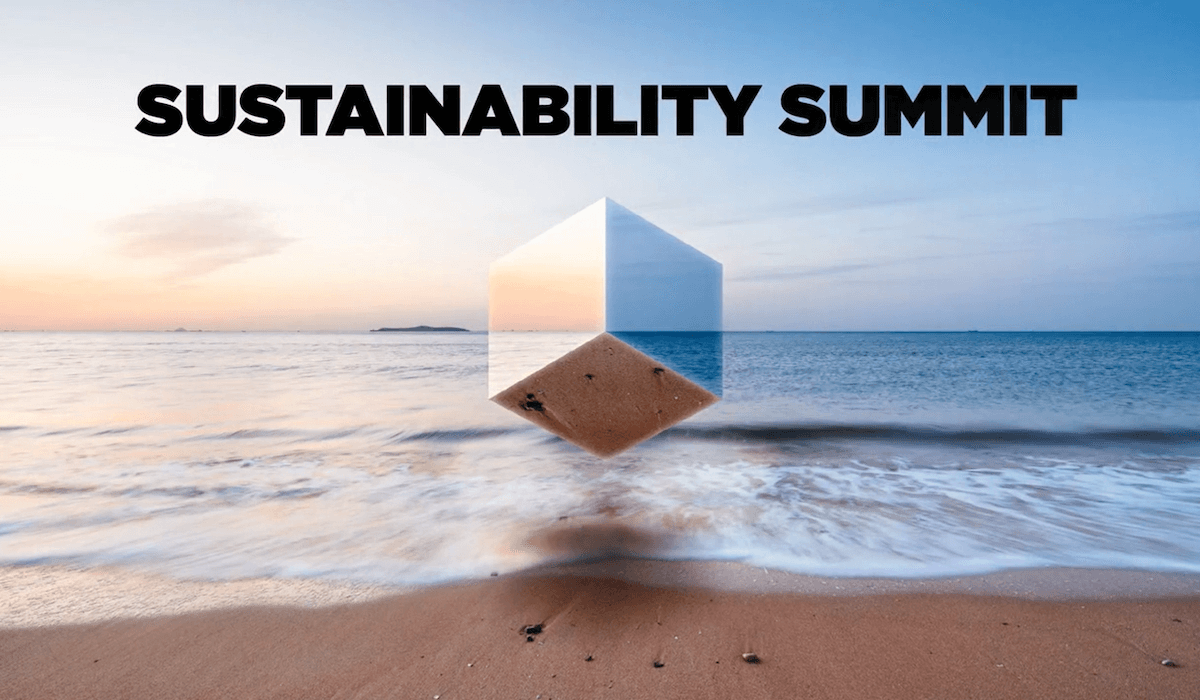One of my go-to statements when it comes to sustainability comes from a famous frog, “It’s not easy being green”. The Sustainability Summit at SEMICON west 2022 discussed and demonstrated some of the challenges the industrial world is facing to meet the challenges of reducing greenhouse gas (GHG) emissions and conserving water and how semiconductor companies are trying to move forward on addressing environmental issues.
At its trade shows, SEMI does its best to address hot topics facing its constituency. SEMICON West 2022, was filled with them. Sustainability has risen to the top of the concerns facing semiconductor and semiconductor equipment companies. So SEMI brought climate change programs front and center to semiconductor equipment companies, and material manufacturers. Larger companies such as Lam Research, TEL, ASML, Applied Materials, and EMD, have the resources to get off the ground and running. Smaller companies don’t necessarily have the resources, or the bandwidth to get started. This in part is where SEMI comes in.
Over the past two years, SEMI has slowly been moving the needle to create a bigger focus on sustainability. The SEMI programs have moved from a keynote speaker or two at a conference, to an online webinar in March 2022, to a sustainability summit at the 2022 SEMICON West. The SEMICON West sustainability summit gave companies and analysts a chance to share their sustainability goals and visions.
Several major semiconductor chip end users, such as Apple, Meta, Google, Microsoft, and Amazon have implemented sustainability programs, and have requested that their supply chains, i.e., semiconductor companies, get on board to help them get to net zero, especially with the challenging Scope 3 emissions.
Several semiconductor companies are WAY ahead of their customers, with both Intel and ST Microelectronics starting programs back in the 1990s to address water and energy concerns. Intel’s efforts in environmental conservation include requirements that its suppliers address the energy and water challenges that are critical to helping reduce greenhouse gases and help with water conservation. Ann Kelleher, Executive Vice President and General Manager of Technology Development Intel Corporation, shared Intel’s views on sustainability, which are a bit more aggressive than the rest of the industries. However, due to Intel’s work on the supply chain and its suggestions to suppliers, most of the equipment and chip industry is shooting for Net Zero in the 2040-time frame based on 2019 data as a starting point. If we all looked at sustainability from Dr. Kelleher’s perspective that water isn’t free and the air isn’t free, the industry might get to net zero sooner.
At the summit, companies shared success goals and challenges. Most if not all companies have a 2050 goal of net zero emissions typically using 2019 as a baseline. While setting goals and working towards them is a great step. Ideally, I would have liked to see companies go back to 2015, the year of the Paris accord as a starting point.
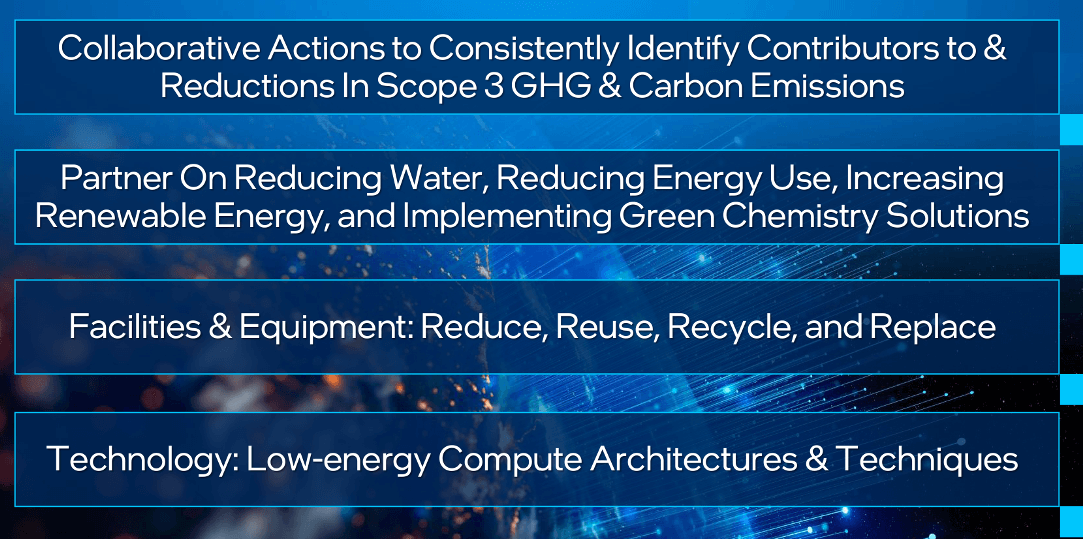
Figure 1: Industry shared challenges and opportunities. (Source: SEMICON West Sustainability Summit Intel)
Why are We So Behind?
As I dig deeper into the sustainability area, one of my frustrations is that with all the information and data that is out there, why are we so far behind in addressing climate issues? One of the first conferences was in Stockholm, in 1972, here we are 50 years later finally setting goals aggressive enough to finally address the problem.
In Figure 2, Christophe Fouquet, EVP EUV Business Line, Board Member, ASML, pointed out that the road to climate change started in 1898. He also pointed out the importance of technology in contributing to solving society’s challenges. The semiconductor industry will be at the forefront of climate change with sensors, and electronics to measure climate impact. And it will also be a major contributor to GHG emissions if solutions are not found for reducing the amount of energy used in AI learning algorithms. As, Anand Nambiar, EVP, Semiconductor Materials, EMD Electronics commented in his presentation, the industry and the world have finally moved Environmental Social Governance (ESG) from PowerPoint presentations to real action, but better industry collaboration is needed.

Based on my own research, it appears companies have been reluctant to focus on sustainability, due to cost, resources, and lack of good and understandable standards, and it’s all been voluntary to this point. Governments are now attempting to set standards, but the challenge of compliance making companies uncompetitive, or it is too expensive to implement, rises to the forefront very quickly. These are some of the challenges the SEC has discovered as they are attempting to get companies to report on ESG as part of their financial reports.
Shally Venugopal, Principal & Vivid Economics NA Leader, McKinsey & Company, broke down the challenges of making these reports based on the recent proposal by the SEC. There have been a lot of pushbacks on this SEC proposal by companies that you would think have a strong ESG focus, so it will be interesting to see the outcome. Venugopal also highlighted the chip industry’s goals to achieve net zero in the future. A great summary for reference; however, note the absence of scope 3 goals, which is one of the complaints about the SEC reporting.
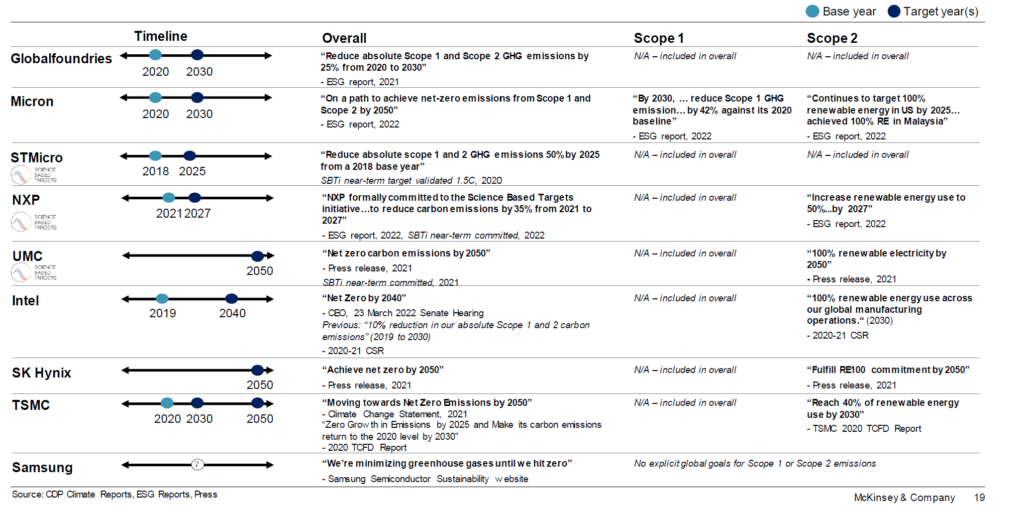
SEMI Sustainability Initiative Roadmap
Mousumi Bhat, VP, SEMI Global Sustainability Programs, SEMI closed the presentation session with the formal release of SEMI’s Sustainability Initiative Roadmap. SEMI has established five working groups to help the industry get its hands around sustainability, collaborate, and focus on key issues across the industry to help reduce GHG emissions. With the kickoff of the sustainability program, I’m hoping it will become a lot more visible on SEMI’s website so member companies, as well as others, can see the progress and borrow the best-known methods for implementing sustainability practices.
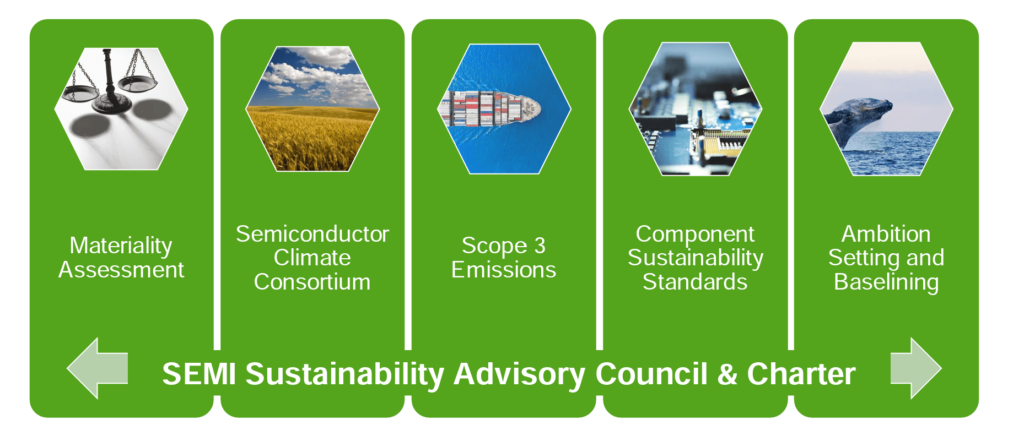
Sustainability Start-up Program
One of the outcomes of the chip and equipment makers’ focus on sustainability is the sustainability startup program. This is where members of the industry have come together and are using their venture arms to help fund and focus on startups. Hynix, Intel, Micron, Samsung, Applied Materials, ASML, KLA, Lam Research, EMD, and TEL have joined forces to help drive projects. In 2021 there was a call for startups to submit proposals. The VCs from the companies then picked finalists, some of whom presented at SEMICON West during the Sustainability Startup session sponsored by M Ventures.
From membranes to motors, to recycling water from cooling towers and AI solutions, new ideas were presented. This is a unique level of cooperation across the industry that shows the willingness to collaborate and be creative to find ways to reduce energy and water consumption for the semiconductor industry.
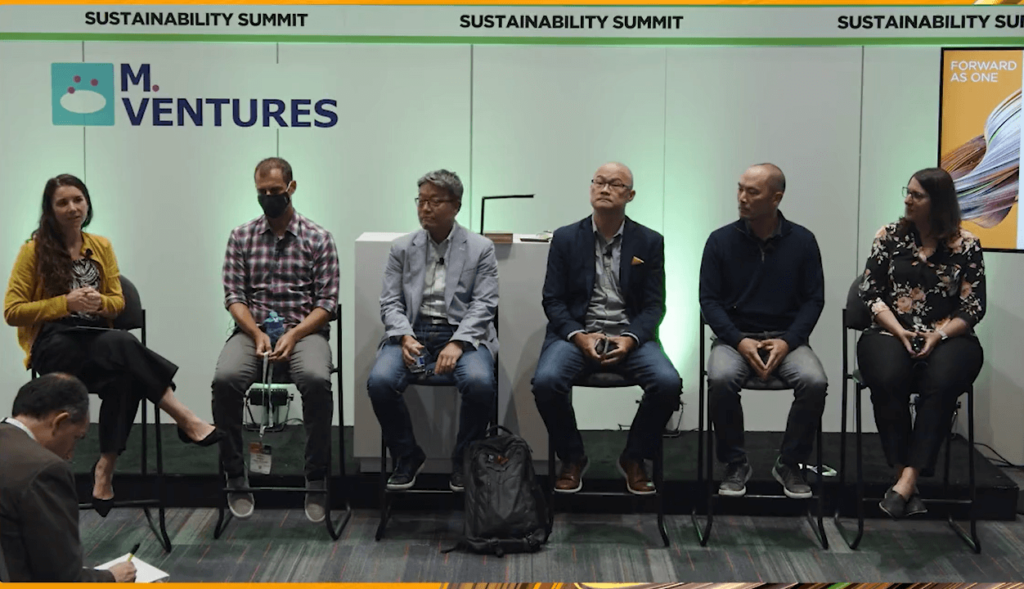
At the end of the presentations, the audience was treated to two panels, one of investor Venture Capitalists, and the other of the industry Venture Capitalists. The discussion was wide, ranging from the challenges of finding companies willing to focus on working with the semiconductor industry due to its unique challenges, to the issues of inserting new technology at a legacy fab that has been running the same process for decades.
Having worked on multiple joint development projects in my life, the question is what happens if someone finds the golden ticket to sustainability? Will it be shared across the industry? The response from one industry VC was that currently, it is very much open source, and that to solve the challenges the industry needed all hands on deck.
These thoughts were also reflected by Joe Stockunas, President, SEMI Americas at the close of the Sustainability Summit. “SEMI brings the community together to solve problems. We need the members to participate to get the job done.”
Across the industry, collaboration will be critical to the semiconductor industry achieving net zero, and beyond.



